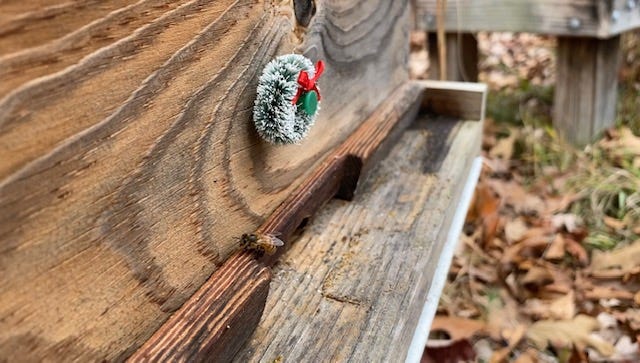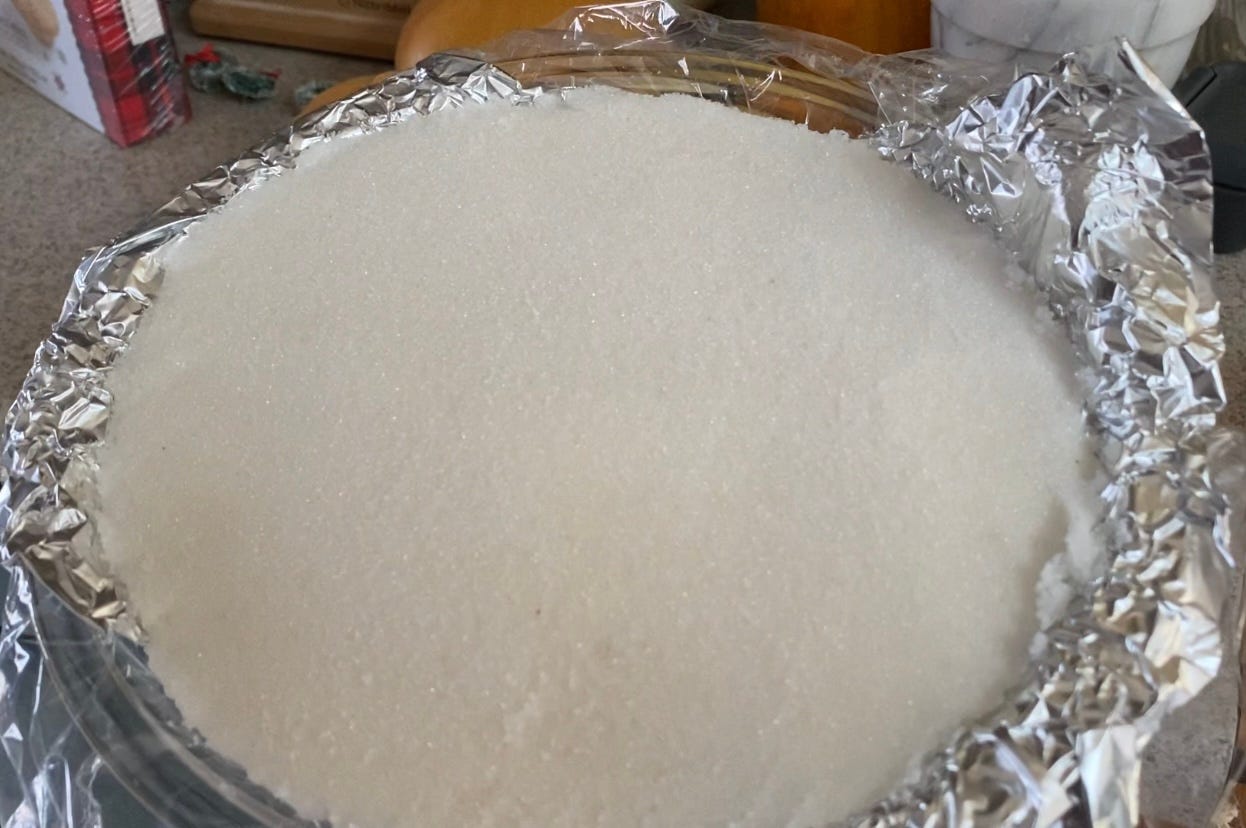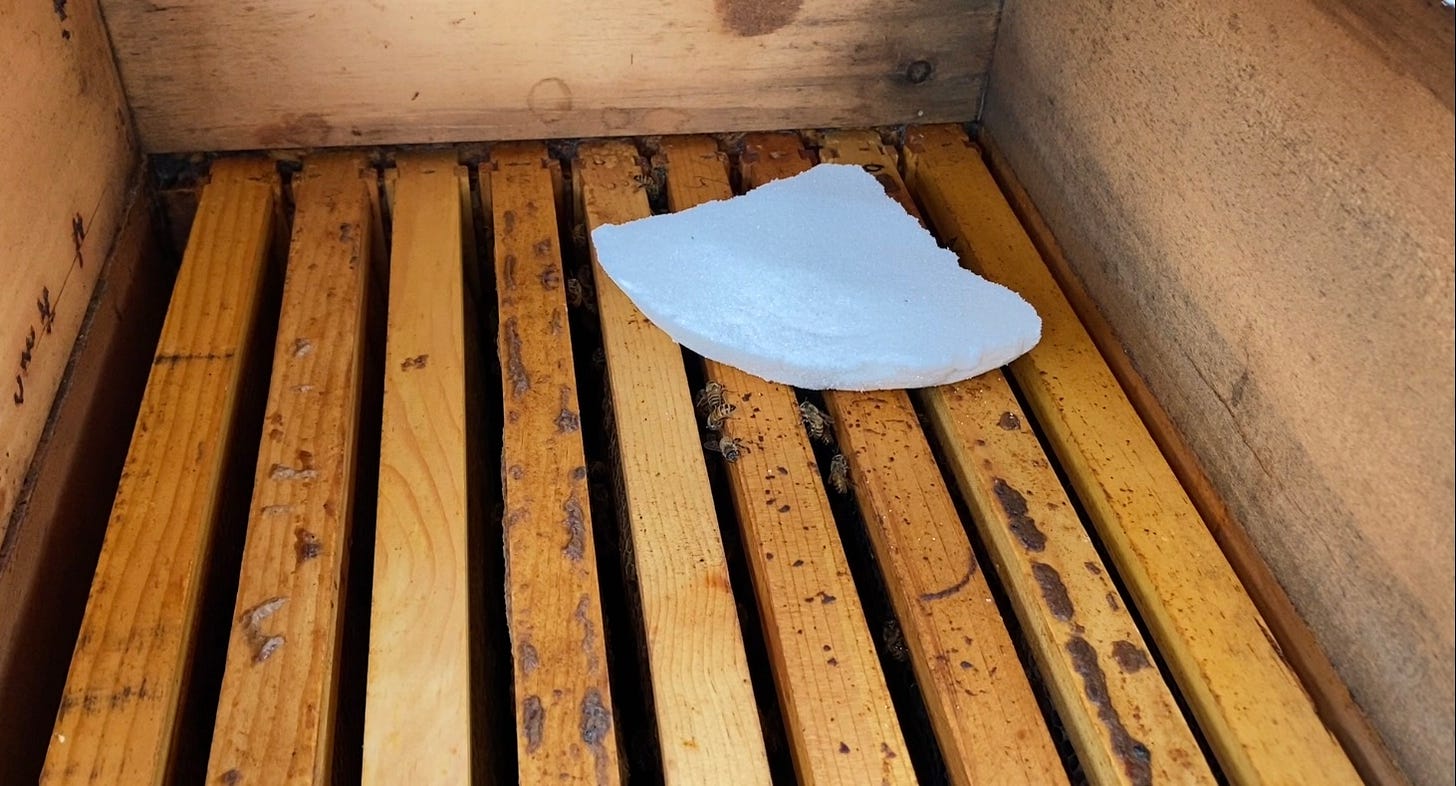Tucking the hives in for winter
Each fall I do a few things for the bees to help them have a comfortable winter.
I’m two weeks away from my seventh winter keeping bees. This time of year is important for the bees and for the keeper. The queen takes a break from laying 2,000+ eggs per day, which is physically demanding for her and on workers tending to brood (baby bees) and gathering food for the majority of the year. For the keeper, it’s time to rest too. Inspecting hives requires lifting heavy boxes, often in the heat here in the South, harvesting and extracting and bottling honey, planning and timing varroa mite treatments, and maintaining hive equipment. If the work required during the peak of beekeeping season was needed year-round, I don’t think I could sustain managing the hives. Seasonal restorative time happens for a reason.
Common questions about winter beekeeping
Winter is generally a hands-off time in beekeeping, but it looks different depending on where you’re located. People commonly ask me if I insulate or wrap my hives, provide a heat source, or move them to a heated shelter. Hives in cold climates benefit from insulation wraps and windbreaks, but here in North Carolina the climate doesn’t call for that. (Especially now that the USDA adjusted our region’s growing zone due to a warming climate.)
A heat source isn’t necessary here either. The colony maintains a cluster around the queen, vibrating and keeping her warm and alive. Worker bees are so effective at producing heat this way that they utilize this skill during other seasons to kill invading predators and “de-throne” queens that no longer serve them. It’s often referred to as a “cuddle death.”
A hive house or shelter also isn’t needed in this climate. I’ve watched videos of commercial, climate-controlled warehouses in Canada where hives are stacked in long rows to tall ceilings. The hum in the videos is calming and ominous. If we lived near the Canadian border I would probably consider setting up a shed for the hives to have a wind break. Providing heat or cold protection is a balance though and can contribute to two of the biggest problems in the winter.
Biggest problems for hives in the winter
As I explained, cold is not an issue for the hives here. The biggest problems are starvation and moisture. Playing with temperature impacts both of these. If you wrap or heat your hives, the bees are more active and leave their cluster. They look for snacks and run the risk of consuming their winter pantry too soon. Heating the hives introduces the risk of moisture. If the heat source fails, then you have a moist and cold environment, which is too challenging for a colony to stay warm in. If the heat source persists, the moisture creates mold. My beekeeping mentor added a heat rock to the top of one of his colonies one winter. In the spring his hive was covered in a moldy fur.
What I do in the fall for the hives to have a successful winter
Sugar brick | Other beekeepers refer to a sugar brick, or candy board, as an insurance policy. A colony may have plenty of honey stored, but when they’re in a cluster they may be too far from the nectar frames. Having the sugar brick on the top frames ensures that the cluster always has a touch point to food. The other benefit of a sugar brick is that it helps absorb excess moisture. What’s a sugar brick? My recipe: 4 cups of pure cane sugar, 1 tsp apple cider vinegar, 1 tsp Pro Health honey bee supplement (or Honey B Healthy), 1 tsp salt, 1/8 cup water (with potentially more to help it come together). I mix all of this in bowl and then press it into a wax paper or foil-lined pie or cake pan. I used to give one sugar brick to each colony, but I’ve learned over the years that’s often too much and there’s always some left over at the end of winter. Instead, I break the brick in half or into thirds. I keep an eye on the colonies over the winter and if I see them getting low then I can easily make another.
Empty hive body on top. The hive body is the box that frames rest in. Instead of adding a hive body full of frames, I add only the hive body on top. This creates an “attic” space for the colony, and enough room for the sugar brick to rest on top of the lower box’s frames. Under the top cover of the hive is an inner cover, a piece of the hive with a ventilation hole in the center, and another in the back, which the bees can use as a “back door” entrance. The bees cluster in the upper center of the hive, which gives them access to the sugar brick. Moisture and heat rise into the empty hive body cavity and can vent through the upper back door. Many beekeepers use quilt boxes, which are small, screened boxes filled with burlap and/or leaves that rest on top of the colony. Those serve as a moisture collector to help the colony regulate their temperatures through winter. I’ve only heard great things about quilt boxes, but I’ve never needed to use them with how I manage my colonies through this sugar brick setup.
Final varroa mite treatments | As the queens stop laying for the year, I take advantage of this broodless time to do one last varroa mite treatment. Varroa mites feed on bee brood, so broodless times are the only times when mites are fully exposed and not mating. While their population is stable and exposed, I look for a mild morning (about 40F-to-60F) to do an oxalic acid vaporization treatment. Oxalic acid isn’t a chemical, it’s an organic compound and physically manages the varroa mites. The treatment takes about 15 minutes per hive (including sealed time for the hive post-vaporizing) and then mites start dropping, with the heaviest mite fall about 48 hours post-treatment. Knocking down mite populations before winter helps prevent honey bee health issues and sets the colony up for a successful start when the season ends.
Short winters in the South
In the piedmont of North Carolina, our swarm season starts in February. My hives get tucked in for about 6-to-8 weeks, which is a fairly short winter. I heard a phrase recently from parents describing raising their young children: “The years are short, but the days are long.” Outside of these winter months, I feel the beekeeping equivalent sentiment is that the seasons are short, but the days are long.






